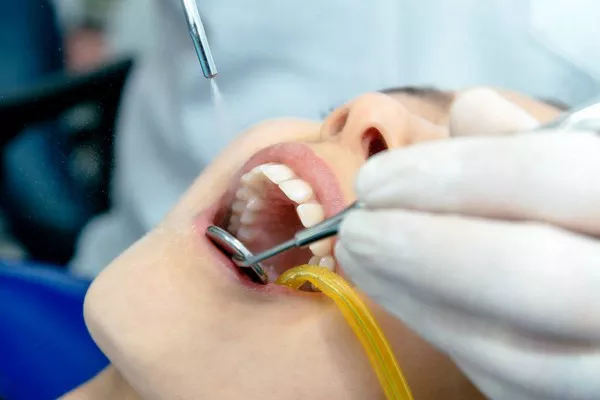Cavities, also known as dental caries, are one of the most common oral health issues worldwide. They are areas of tooth decay that result from the gradual breakdown of the tooth’s structure due to acids produced by bacteria. Early detection and treatment of cavities are crucial for preventing further damage and preserving your oral health. In this article, we’ll explore the signs and symptoms of cavities, risk factors that contribute to their development, and the importance of regular dental checkups in maintaining optimal oral well-being.
Understanding Cavities
Cavities are the result of a combination of factors: bacteria, sugars, and acids. Bacteria naturally present in your mouth interact with sugars from foods and beverages to produce acids. These acids gradually erode the enamel—the outer protective layer of the teeth—leading to the formation of small holes or cavities.
Common Signs and Symptoms of Cavities
Recognizing the signs and symptoms of cavities is essential for early detection and timely intervention:
Tooth Sensitivity: Sensitivity to hot, cold, or sweet foods and drinks can indicate the presence of a cavity. The erosion of enamel exposes the sensitive inner layers of the tooth.
Toothache: Persistent or intermittent toothaches, especially when biting down or applying pressure, may be a sign of a cavity.
Visible Pits or Holes: Cavities can cause visible pits, holes, or dark spots on the tooth surface. These are often noticeable to the naked eye, especially on the biting surfaces of molars.
Discoloration: White, brown, or black stains or spots on the teeth may indicate the presence of cavities.
Pain While Eating: Discomfort or pain when consuming certain foods, particularly sugary or acidic ones, can be a symptom of cavities.
Bad Breath: Persistent bad breath that isn’t alleviated by regular oral hygiene practices may be associated with cavities and the presence of bacteria.
Painful Chewing: Pain or discomfort when chewing or biting down can suggest the existence of a cavity that has progressed deeper into the tooth.
Risk Factors for Cavities
Several factors increase the likelihood of developing cavities:
Poor Oral Hygiene: Inadequate brushing, flossing, and oral care practices allow bacteria to thrive, leading to plaque buildup and cavity formation.
Diet: A diet high in sugary and starchy foods provides fuel for bacteria to produce acids that contribute to enamel erosion.
Frequent Snacking: Frequent consumption of snacks and sugary beverages exposes teeth to constant acid attacks, increasing the risk of cavities.
Dry Mouth: Saliva helps neutralize acids and remineralize teeth. A dry mouth lacks this protective function, making teeth more susceptible to cavities.
Lack of Fluoride: Fluoride helps strengthen enamel and makes it more resistant to acid erosion. Insufficient fluoride exposure increases cavity risk.
Inadequate Dental Care: Skipping regular dental checkups and cleanings prevents early detection and treatment of cavities.
Importance of Regular Dental Checkups
Regular dental checkups are essential for maintaining good oral health and detecting cavities in their early stages. Dentists can identify cavities through visual examinations, dental X-rays, and other diagnostic tools. Early detection allows for more conservative treatment options and prevents the need for extensive dental work.
Preventing Cavities
Preventing cavities involves adopting healthy oral care habits and making informed lifestyle choices:
Brushing: Brush your teeth at least twice a day with fluoride toothpaste to remove plaque and bacteria.
Flossing: Floss daily to clean between teeth and remove food particles that brushing can’t reach.
Balanced Diet: Limit sugary and starchy foods, and opt for a diet rich in fruits, vegetables, whole grains, and lean proteins.
Fluoride Use: Use fluoride toothpaste and, if recommended by your dentist, consider fluoride mouth rinses.
Regular Dental Visits: Schedule dental checkups every six months or as recommended by your dentist.
Dental Sealants: Consider dental sealants, which are protective coatings applied to the chewing surfaces of molars to prevent cavity formation.
Conclusion
Knowing the signs and symptoms of cavities is crucial for maintaining optimal oral health. Tooth sensitivity, visible pits, discoloration, toothaches, and discomfort while eating are common indicators of cavities. Understanding the risk factors that contribute to their development, such as poor oral hygiene, diet, and dry mouth, empowers you to make informed choices to prevent cavities. Regular dental checkups play a vital role in early detection, ensuring timely intervention and effective treatment. By adopting a thorough oral care routine, making healthy dietary choices, and seeking professional guidance, you can safeguard your smile and enjoy excellent oral well-being for years to come.
Related Topics:





























